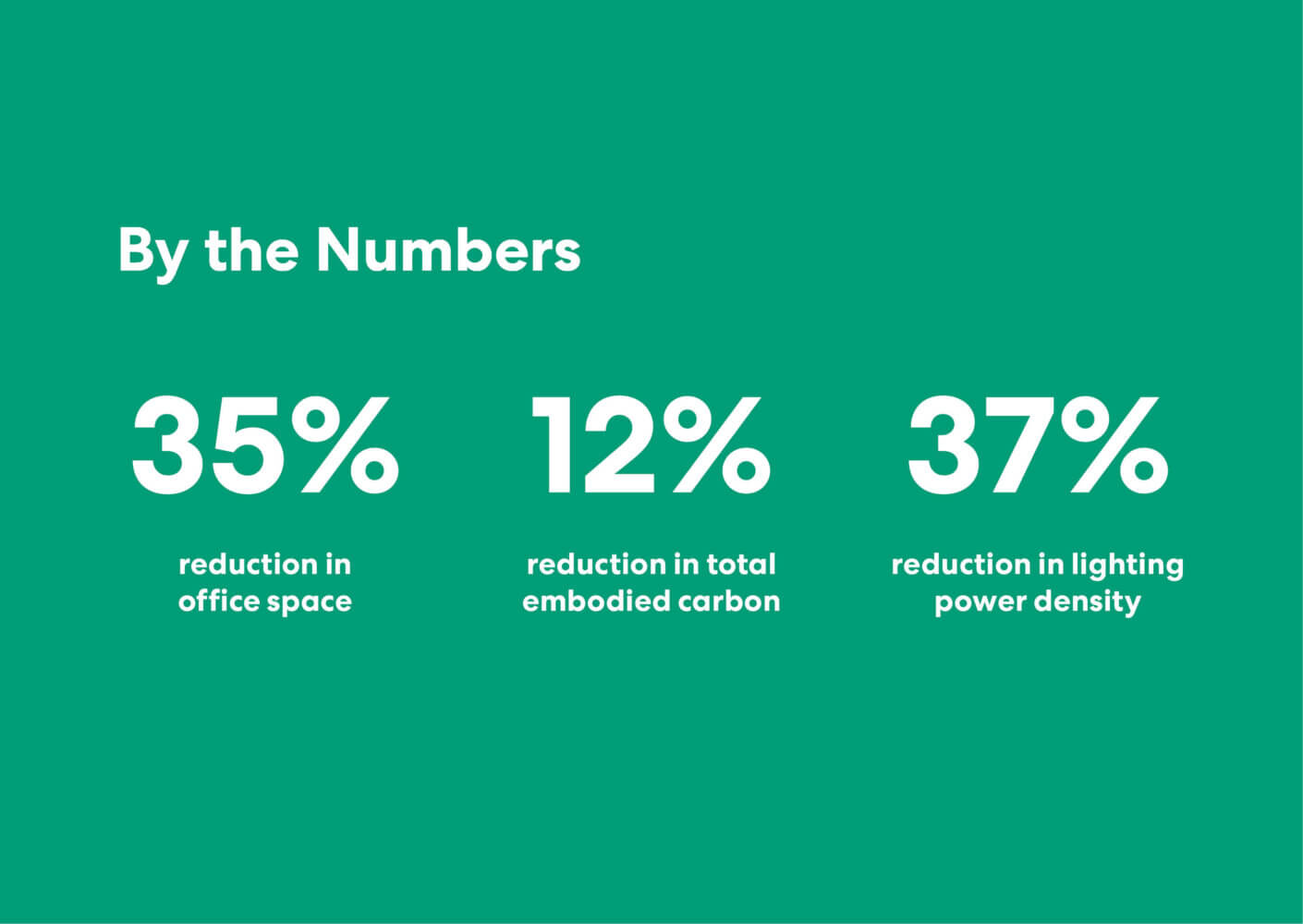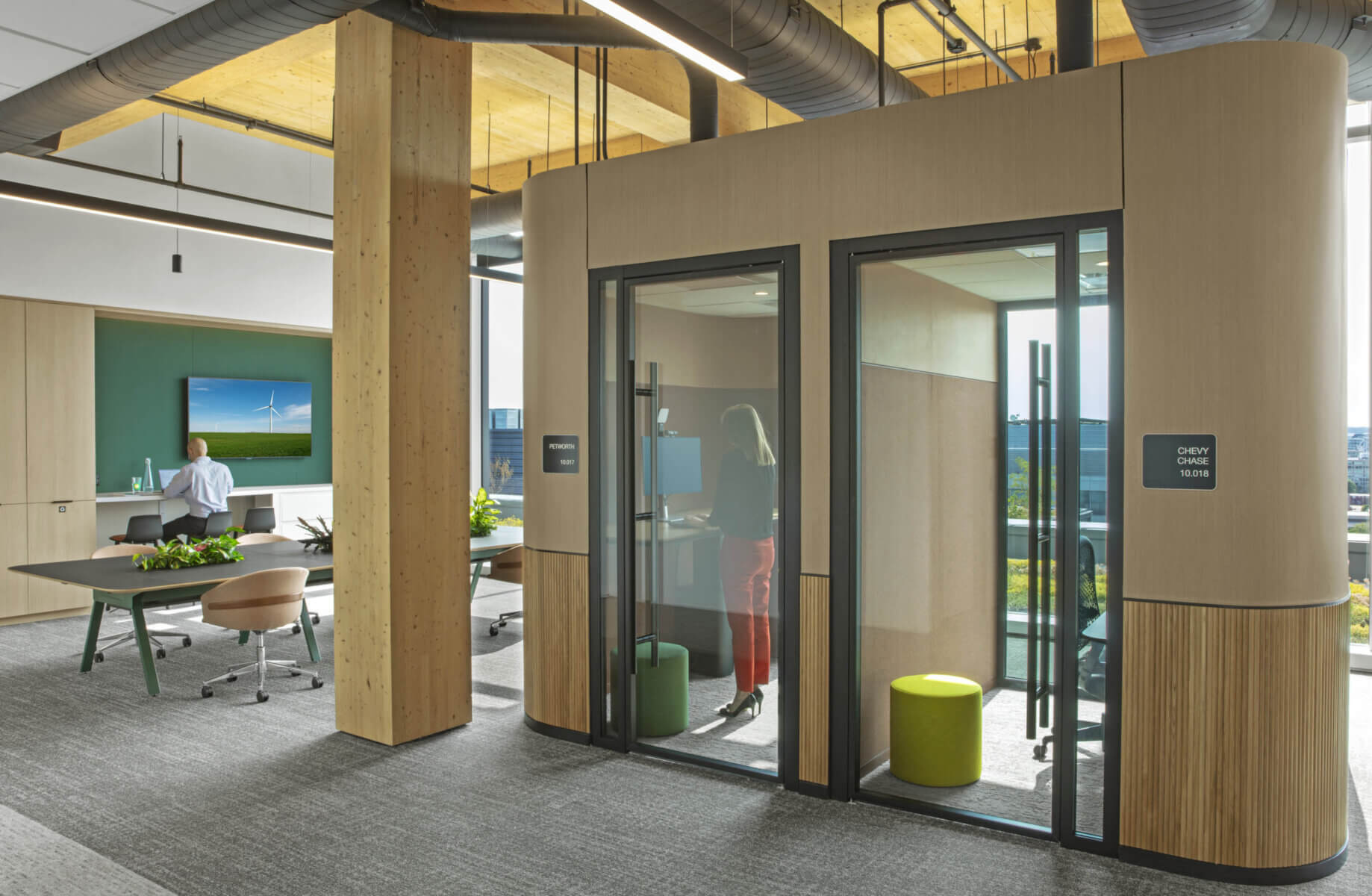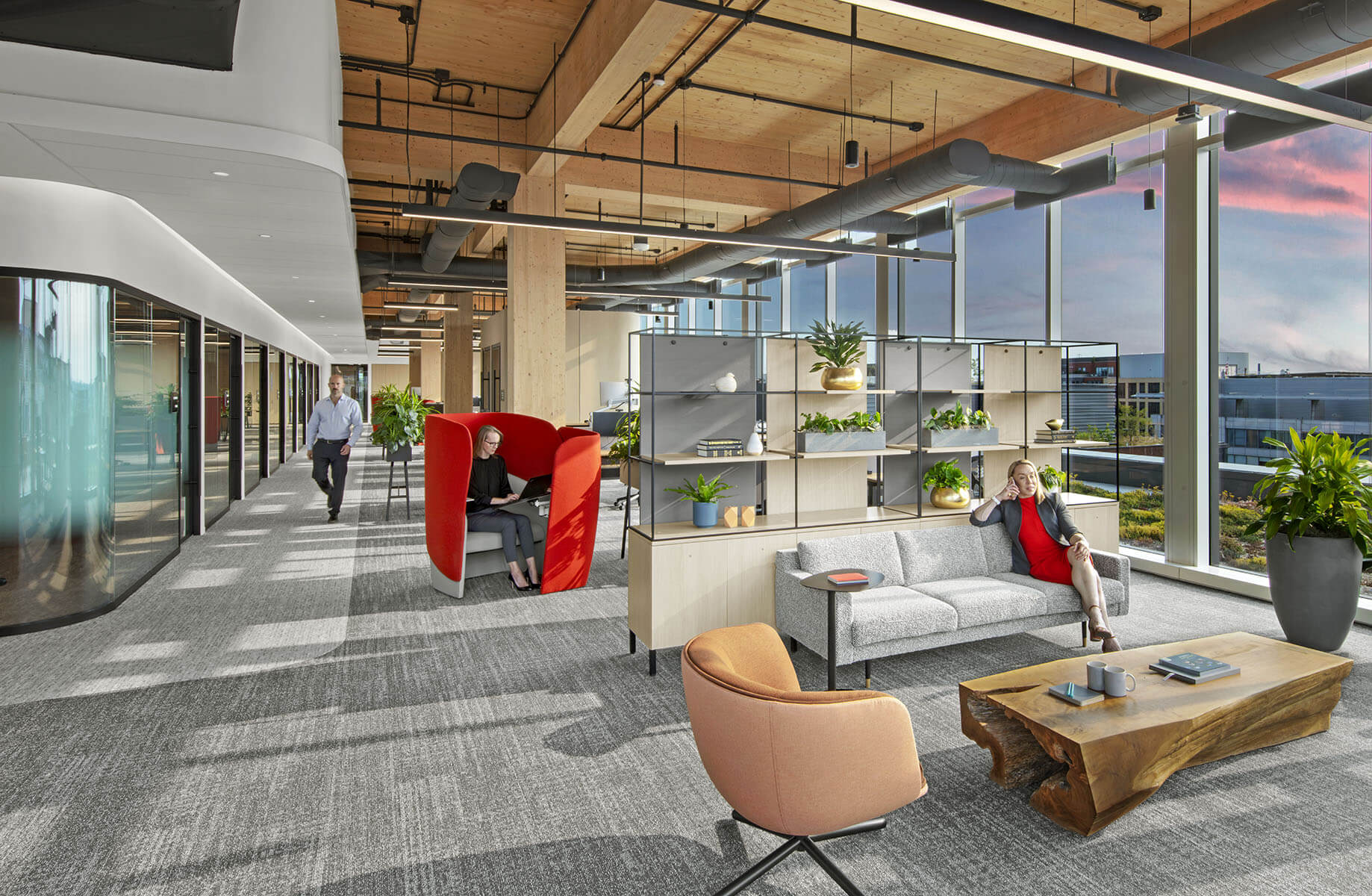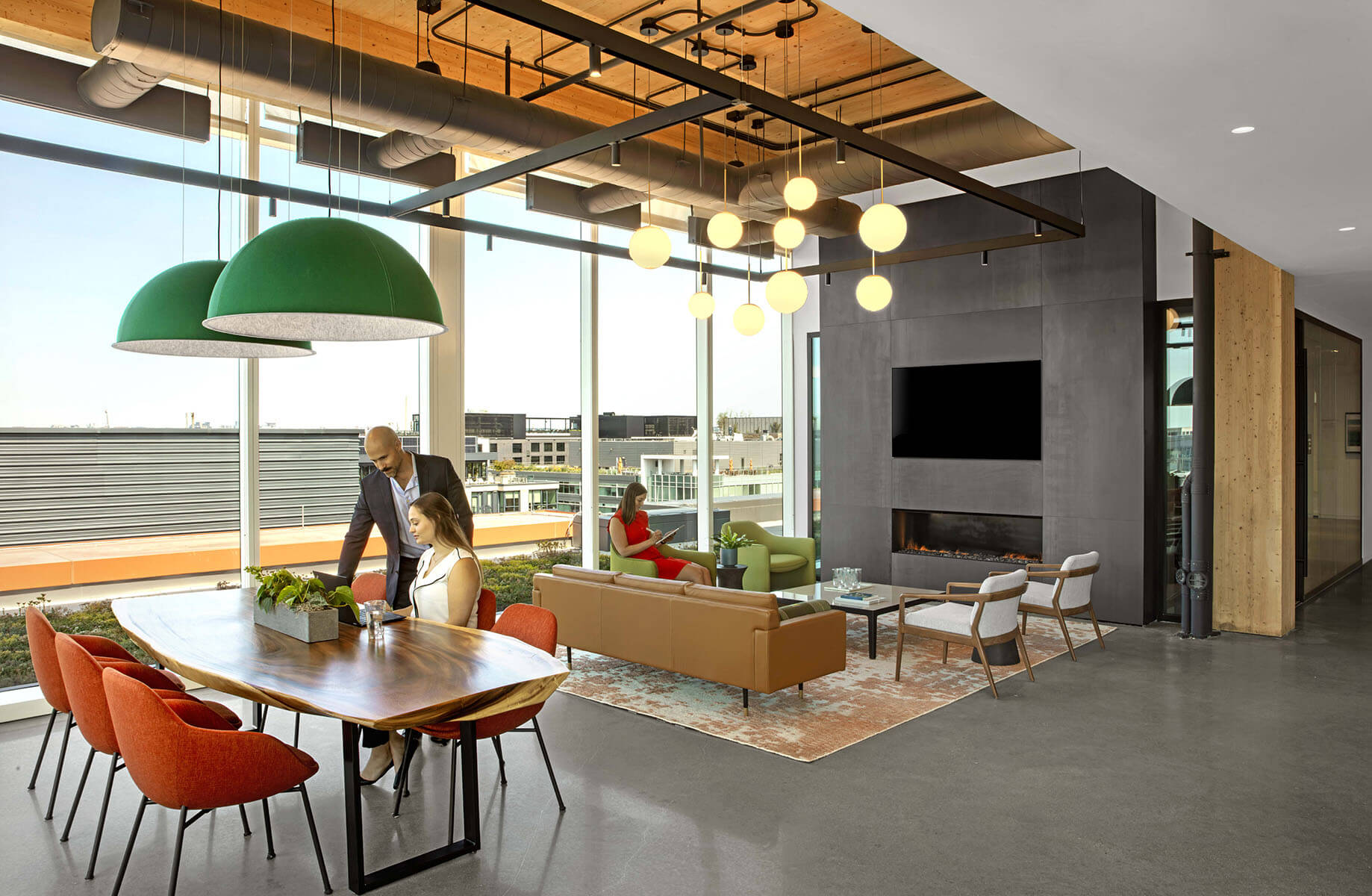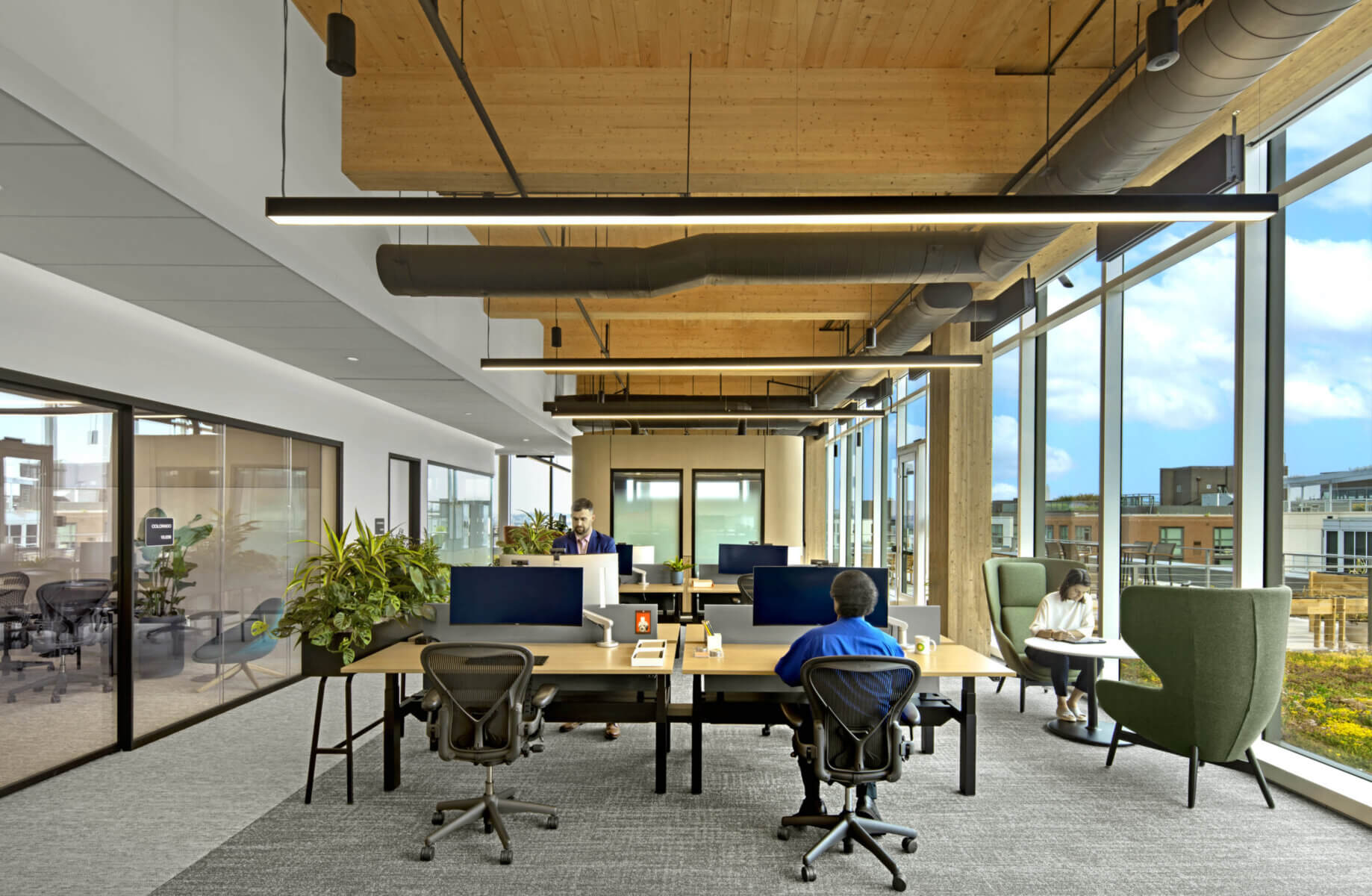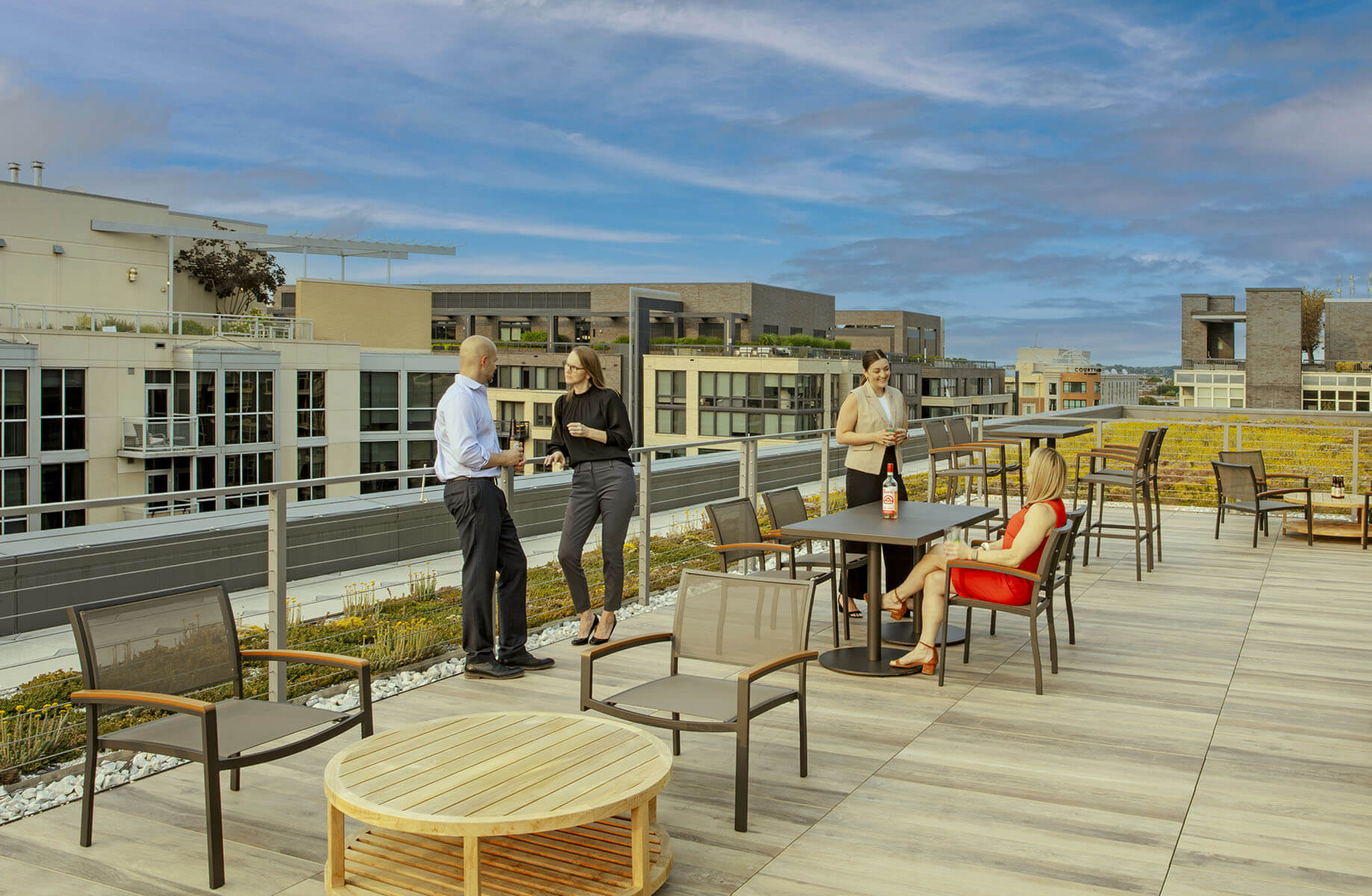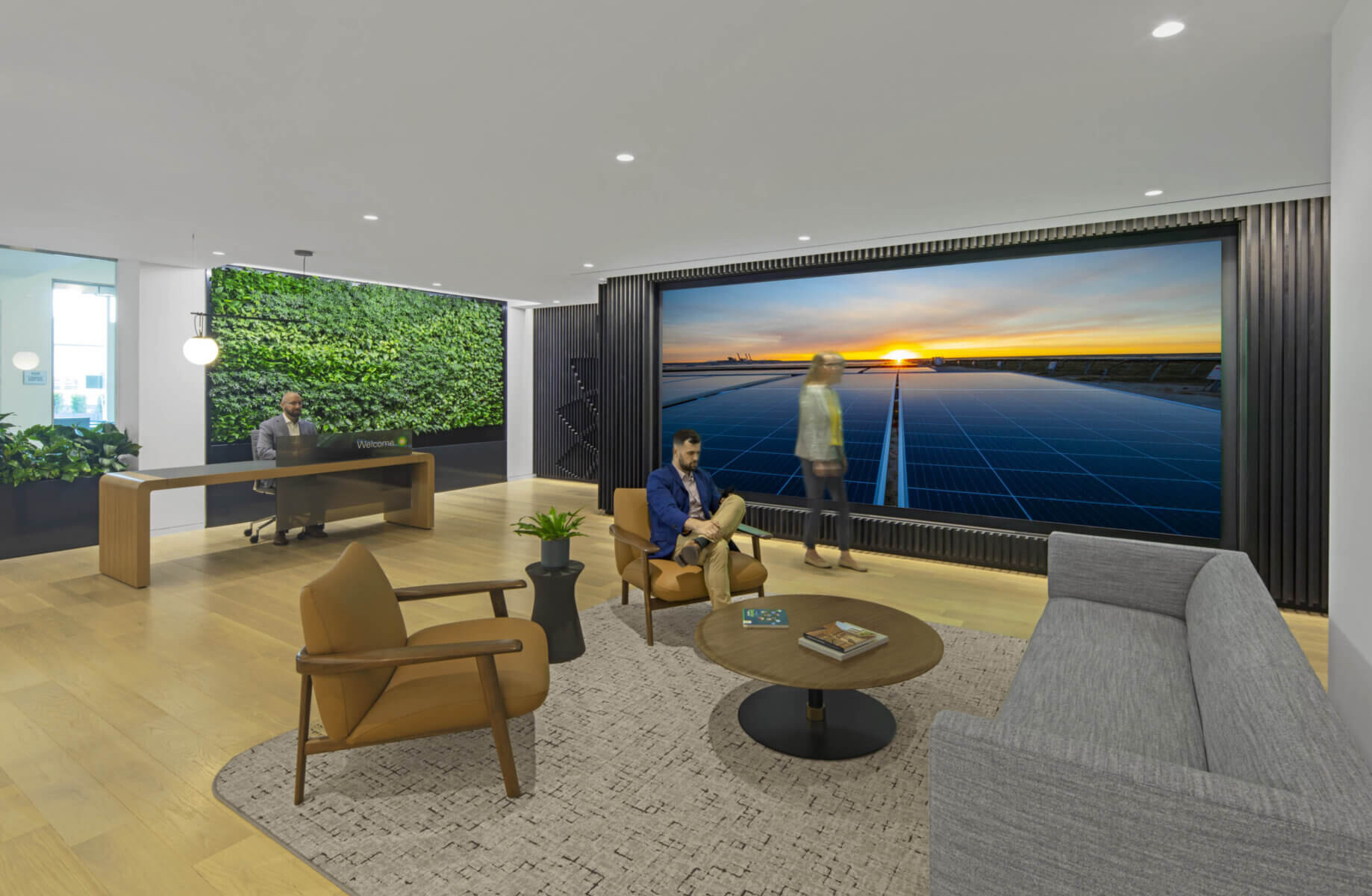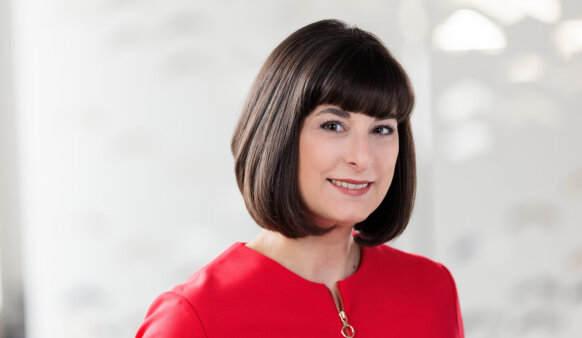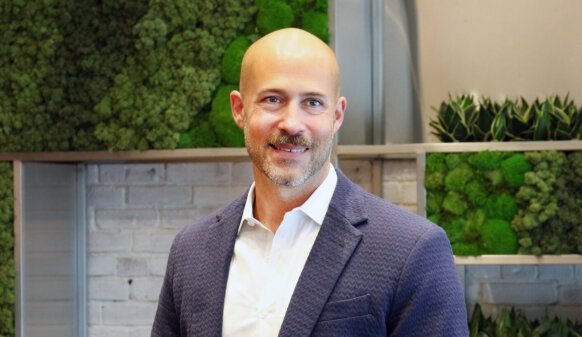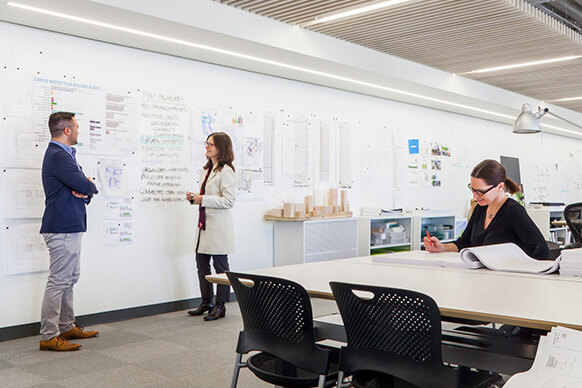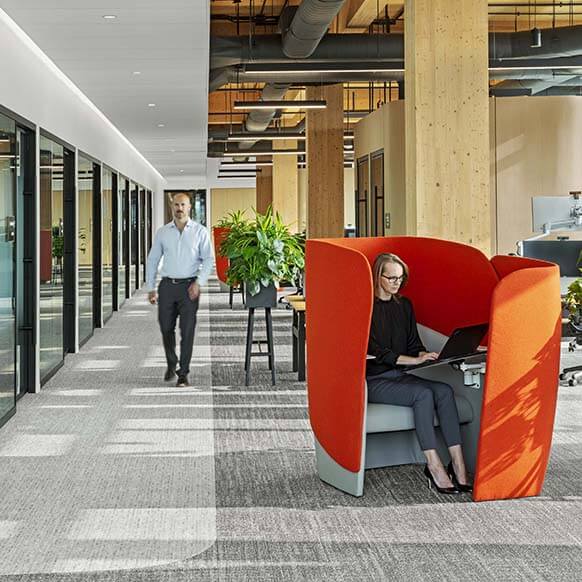Designing to support neurodiversity and sustainability in the workplace
As a Confidential Global Energy Company prepared to premiere their workplace transformation program in conjunction with a move to a new office in Washington, D.C., they engaged us to consider all aspects of the project through the lens of their commitment to sustainability, inclusion, and diversity.
From a planning perspective, the client wanted to respond to hybrid working models and reinforce the power of collaboration within the organization. This meant moving away from assigned personal workspaces to a more fluid approach that balances focus and group workspaces. In particular, they asked us to recommend design approaches to support their workplace transformation goals. Those goals include promoting environmental sustainability and wellness, empowering a variety of people and perspectives, encouraging meaningful interactions and a thriving culture, and fostering ecological and human health.
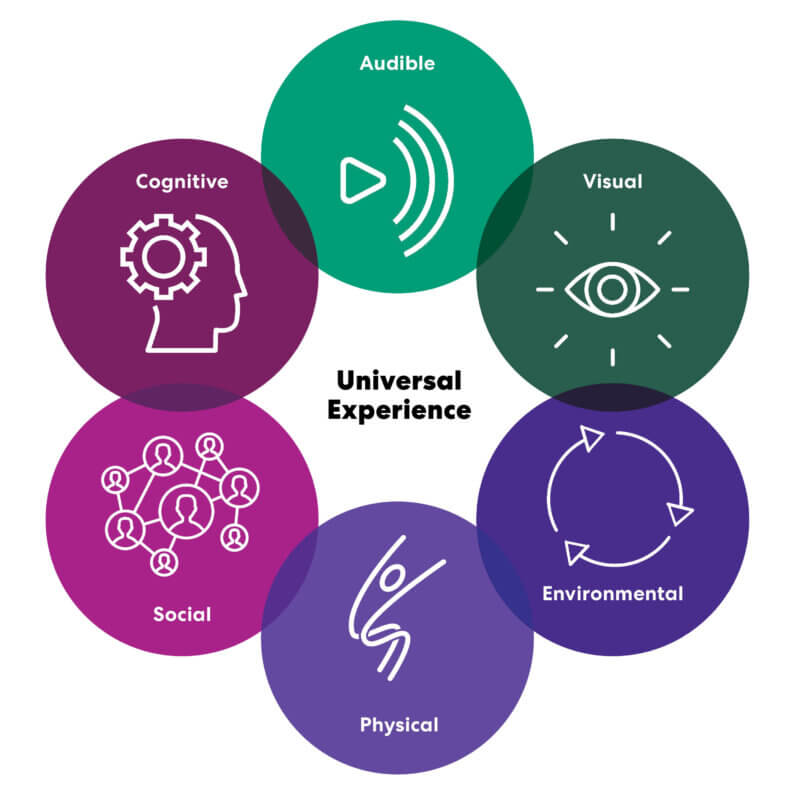
To optimize the in-person experience and help everyone bring their best, full selves to work, we used the Neurodiversity Toolkit to inform our approach to diversity and inclusion. The toolkit provides strategies for evaluating and implementing design solutions to support individuals across the spectrum of cognitive variations.
Providing choice, flexibility, and variety—concepts critical to a Universal Design approach—is a foundational principle. Encouraging employees to choose a work environment that responds to preferences and comfort makes the office a desirable destination that supports individual productivity and well-being for staff. A detailed employee engagement survey provided insights into user preferences and the importance of specific space types within this particular workplace, and it guided our team in delivering solutions that responded to those needs.
The toolkit explores six categories and eighty planning strategies that contribute to an inclusive experience. By considering insights gained from an employee survey alongside the aims of the client’s workplace design transformation guidelines and the toolkit’s guidance to support neurodiversity within the workplace, we were able to recommend design solutions that empower staff to choose the work environments that best suit them over the course of a workday.
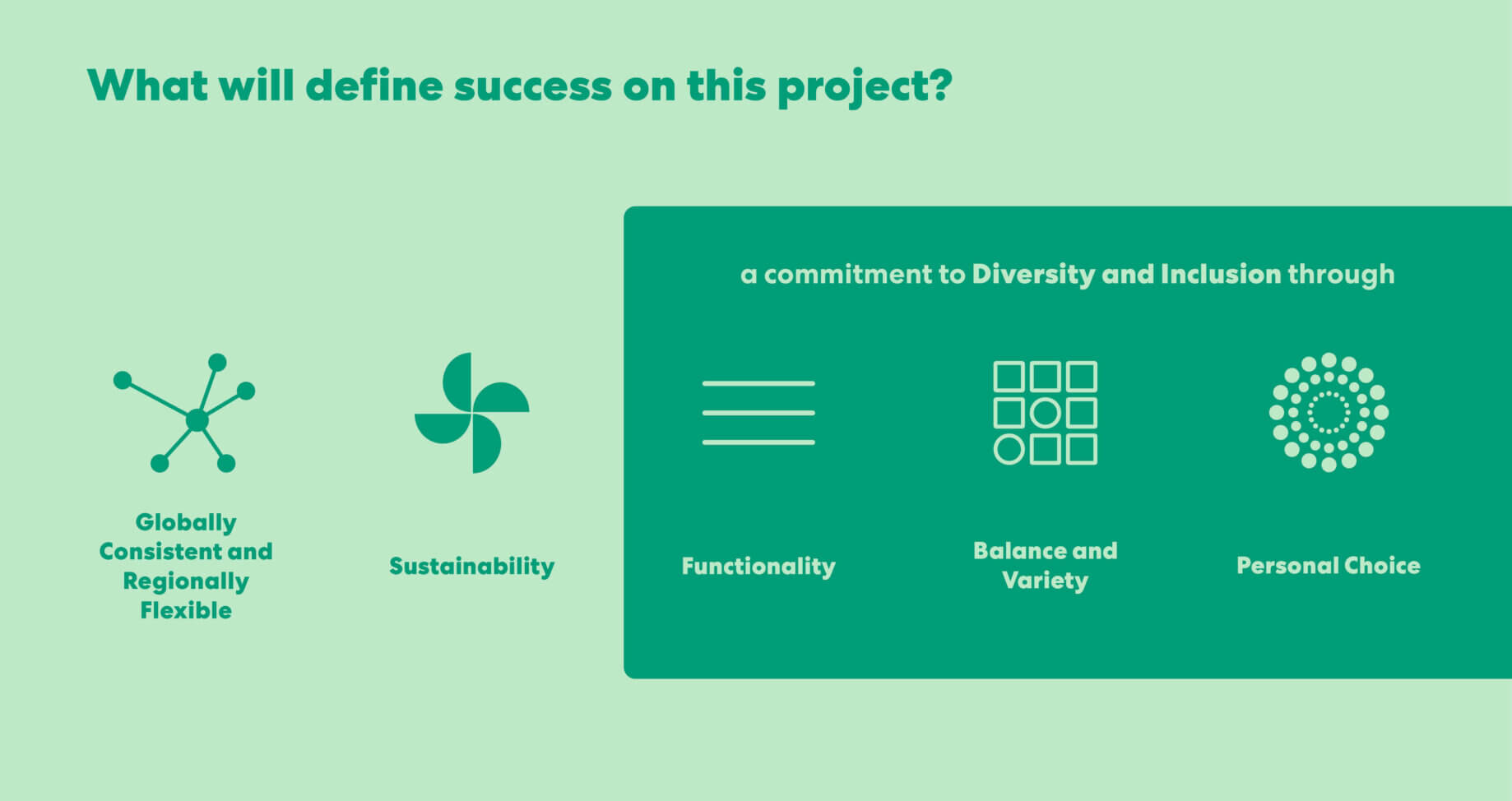
As the client expands investments in renewable energy, they wanted the workplace to reflect their commitment to sustainability. Our efforts began with site selection. We worked alongside the client’s real estate and project services team to consider various lease spaces with a low carbon footprint, and the team decided to fit out the top floor of the first mid-rise mass timber extension in DC. Mass timber, which sequesters carbon in its wooden structure, effectively reduces the embodied carbon in building projects by about a third over similarly sized steel or concrete buildings. Additionally, the office is within walking distance of three public transit stations, which decreases commuters’ environmental impact.
After determining the location, we evaluated natural daylight patterns, space needs for work-related activities, and energy and water conservation measures. We also advised the client on a range of options for materials like drywall, flooring, windows, and more. These analyses documented the products’ carbon impact, and we advised on materials that affect human health and well-being as well.
We determined that:
- Using an efficient lighting layout, daylighting controls, and LED fixtures could reduce lighting power density by 37%, exceeding the target 25% reduction.
- Low-flow plumbing fixtures could reduce water use intensity by nearly 34%, exceeding the 30% reduction target.
- By prioritizing materials with declared global warming potential and optimizing for low carbon emissions, the project’s total embodied carbon could be reduced 12% from a “typical” project baseline with the same quantity of materials.
- Enhanced air filtration (MERV-13) measures could be incorporated into the mechanical design, and a rigorous indoor air quality plan during construction would ensure high indoor air quality.
In addition to these operational measures, the design team worked with the general contractor to track sustainable material metrics, including percentage of recycled content, locally sourced materials, FSC-certified wood, and the amount of construction waste diverted from landfills.
This information is captured in a digital database that can be replicated for other projects and can create consistent records of the client’s sustainability and wellness efforts.
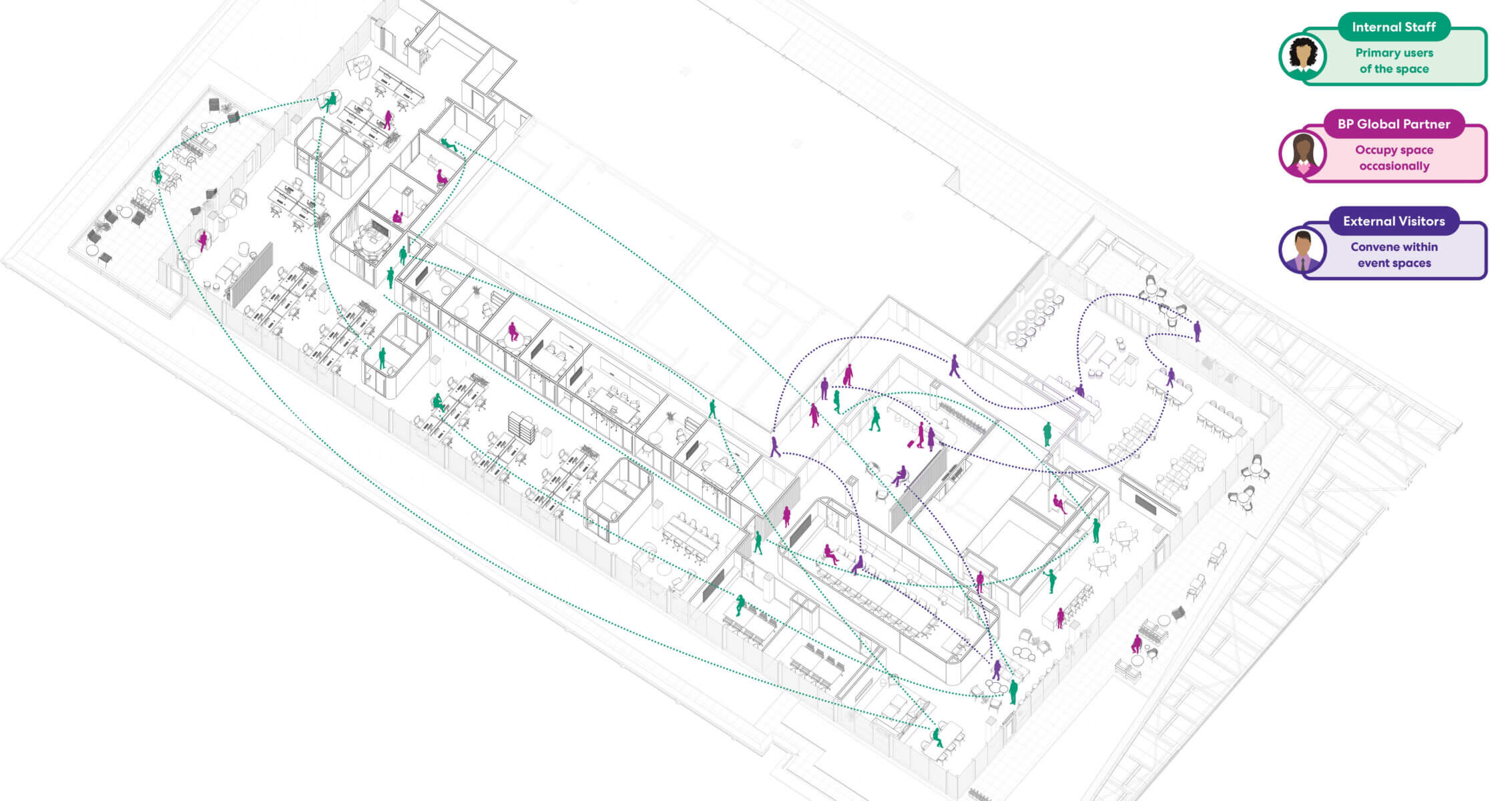
The office embodies the client’s pioneering response to a shifting workplace landscape and invites diverse people and perspectives into a supportive, more sustainable environment. The completed project significantly exceeds reduction targets for energy, water, and embodied carbon. The design also enables employees across the broadest possible range of abilities and preferences to bring their best selves to work.
SVP Communications and External Affairs, Confidential Global Energy Company
